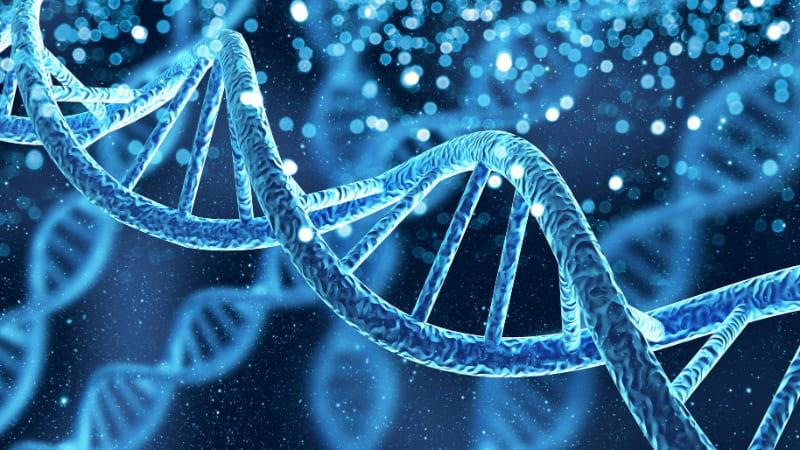In the chain of chemical reactions after TLR activation, NF-kappa-B essential modulator (NEMO) is an important protein downstream of Myd88 and IRAK-4. NEMO is required for the activation of the NF-kappa-B family of transcription factors. These factors ultimately regulate lymphocyte development and proliferation, inflammation, and immune responses.
Besides TLRs, other signaling pathways also recruit NEMO. For this reason, in NEMO deficiency, many cellular processes are affected, and individuals tend to have more clinical manifestations compared to TLR deficiencies.
One of these pathways starts with the ectodysplasin-A receptor, which is important for the development of ectodermal tissues, such as hair, skin, nails, etc. Malfunction of this pathway results in anhidrotic ectodermal dysplasia (EDA), a condition characterized by dry and thickened skin, conical teeth, absence of sweat glands, and thin, sparse hair. About 90% of individuals with NEMO deficiency have EDA. Several different disorders can cause EDA, but the association of EDA and immune deficiency (EDA-ID) is highly suggestive of NEMO deficiency syndrome.
From the immunological standpoint, individuals with NEMO deficiency syndrome have a range of infections with pus-inducing organisms. Streptococcus pneumonia and Staphylococcus aureus are the most common pathogens, but individuals with NEMO can also have viral and fungal infections. Infections can be severe and may be found virtually anywhere in the body, including the lungs, skin, central nervous system, liver, abdomen, urinary tract, bones, and gastrointestinal tract.
Despite vaccination, many individuals have humoral immunity problems with a complete lack of antibody response against certain bacteria, such as Streptococcus pneumoniae. A subset of these individuals presents with high serum levels of IgM. Other individuals exhibit deficiencies in additional arms of the immune system that cause increased susceptibility to mycobacteria. These individuals may develop disseminated infection if they receive the BCG vaccine (the live tuberculosis vaccine, which is not used in the U.S. but is commonly given in other countries).
A small group of individuals has a more severe disease course presenting with two additional conditions: osteopetrosis (a disorder in which bones are denser, prone to fractures, and the bone marrow fails to produce blood cells) and lymphedema (fluid retention due to defects in lymphatic vessels), known as OL-EDA-ID syndrome.
NEMO deficiency is inherited in an X-linked manner; hence, almost all cases occur in boys. Female carriers are normally free of immune symptoms, but some might have a skin condition called incontinentia pigmenti.
Diagnosis of NEMO deficiency is based on clinical manifestations. The presence of EDA is usually a hint but can be absent in 10% of individuals. Almost all individuals with NEMO deficiency lack protective levels of pneumococcal antibodies following pneumococcal vaccination. Routine immunological tests are variable among individuals, and normal results do not rule out the diagnosis. Diagnostic confirmation requires genetic testing.
Therapy for NEMO deficiency aims to prevent infections and complications stemming from infection. Individuals with antibody defects receive immunoglobulin (Ig) replacement therapy. While this therapy is a cornerstone of treatment, it is insufficient alone to control infections, given the broad-based immune issues in these individuals. Therefore, individuals also receive a series of prophylactic antibiotics as part of their infection-preventive regimen.
Individuals with NEMO deficiency should see their primary care physician and immunologist regularly, as problems and complications can be frequent. Treatment should be started promptly whenever an infection is suspected. Hematopoietic stem cell transplantation (HSCT) has been used for some individuals with NEMO deficiency. Outcomes after transplantation have been variable. Transplantation can correct the immunological defects of NEMO deficiency but does not improve the other complications of the syndrome.
Learn more about NEMO deficiency












